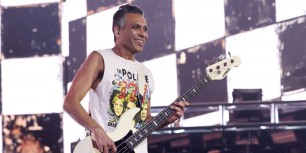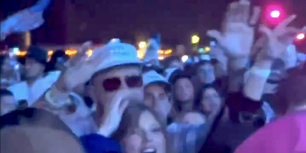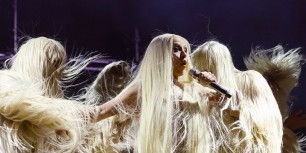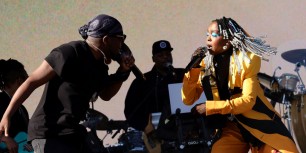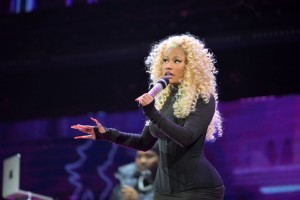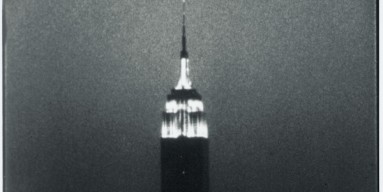It was Terry Riley who once quipped, "Western music is fast because it's not in tune." But of course, it was the one, true minimalist--La Monte Thornton Young (b. 1935)--who sat us down and taught us how to really, mathematically even, match pitch. From the early Trio for Strings (1958) to the conceptual Composition 1960 #7, and of course that ongoing magnum opus, The Well-Tuned Piano, no other composer has done more to legitimize just intonation in Anglo-American concert music than Young. His theater remains eternal music, indeed.
Centuries-long story short, our equal-tempered piano is out-of-tune with the natural order of things--namely, the harmonic series of every vibrating body. In standardizing the distance between two notes (care of some spurious quadratic), we lose all the nuance, every gradation innate to the "music of the spheres." In the 20-plus page playbill for these concerts, Young describes just intonation as "that system of tuning in which every frequency is related to every other frequency as the numerator or denominator of some whole number fraction." Right. Just intonation proves both an organic and a democratic alternative; again, his is a beautiful mind.
The Pythagoras of downtown New York, if Young's wholesale re-crunching of Western music sounds heady and hot-headed, well, that's because it is. A pharaoh of the Lower West Side, too, when it comes to actually performing said calculus, though, it's always been his way or the Holland Tunnel. (Just ask Tony Conrad, circa Slapping Pythagoras [Table of the Elements, '95].) And while that megalomania is all La Monte, Young's numbers were supposedly divined to him via that great guru of Vedic music, Pandit Pran Nath.
The Nadia Boulanger of Hindustani studies, at one time, Nath's pupils included Henry Flynt, Yoshi Wada and both the beards of Terry Riley and La Monte Young. But just as Young was first, and best, at everything Riley would come to get credit for, it was Young who became the flint for Pandit Pran Nath's flame. To wit, we have this series of performances--memorial tributes for what would've been the 93rd birthday of La Monte Young's biggest influence. And if you thought just intonation was some particularly sobering voodoo, honestly, it can't hold an abacus to Pandit Pran Nath's raga darbari.
Now, even a cursory explanation of North Indian raga would be well beyond the limited scope of this review. From vadi to samvadi, komal ga to komal ni, it's simply way too complex and far too foreign. Not that that matters at the Dream House, though. From the unmarked walk-up to the fog of incense to the near draconian no-pointing-your-feet-towards-the-performers house rule, the entire experience seems purposefully designed to disorient and confound. Furthermore, since Young would not deign any unauthorized reproduction of his likeness, ex post facto, there's little personal proof you were even there at all.
For our purposes, all ye really need know about raga is the alap, or the introductory section. In fact, alap is nothing but exposition. Because Young was a reformed serialist, gone Fluxus, long before he christened himself a numerological mystic, pretty much anything goes here (provided you color within her pitch space). As Pandit Pran Nath once put it, himself, "alap is the essence of raga." The Just Alap Ensemble, then, consists only of the voices of Young, his wife-cum-lighting designer Marian Zazeela, the happy couple's "senior raga disciple" Jung Hee Choi and Naren Budhkar's tabla sprinklings. Apropos, when you hear them lock into a perfectly tuned, mathematically precise chord, everything sounds just right. It's a revelatory moment for sure, not unlike an epiphany.
Having played together, this very same personnel, since 2002, I'm wont to suspect that not every Just Alap Ensemble gig is a revelation. It just can't be. This is not due to some dearth of expertise, much less commitment to the cause; Young and Co. are too skilled of zealots. No, it's more endemic than that. In most mostly-improvised musics, the lack of an urtext score will inevitably yield content devoid of form. Thus, all standard notions of performance--execution, interpretation, etc.--will be forced deviations. Then again, for the last half-century, has their been a deviant of Occidental sound more salacious than La Monte Young?
Whereas the composers uptown functioned with an integral calculus, these concerts further proved that Young has always been more of a Leibniz: the rate at which his music changes is differential. True, the area under Terry Riley's rainbow has been similarly curved, but his sound world has remained derivative to wherever Young's tanget has taken him. Having vanquished the influence of everyone from Eric Dolphy to Schoenberg to George Maciunas during his lifetime, at the doorstep of 80 years old, it sounds like La Monte Young is still wrestling with the ghost of Pandit Pran Nath. Ultimately, when the final bell rings, I'll bet that Young gets the decision. Until then, I'll only be scratching my head.
This article originally appeared on The Liminal, with the title "La Monte Young and The Just Alap Raga Ensemble at Dream House, New York."
